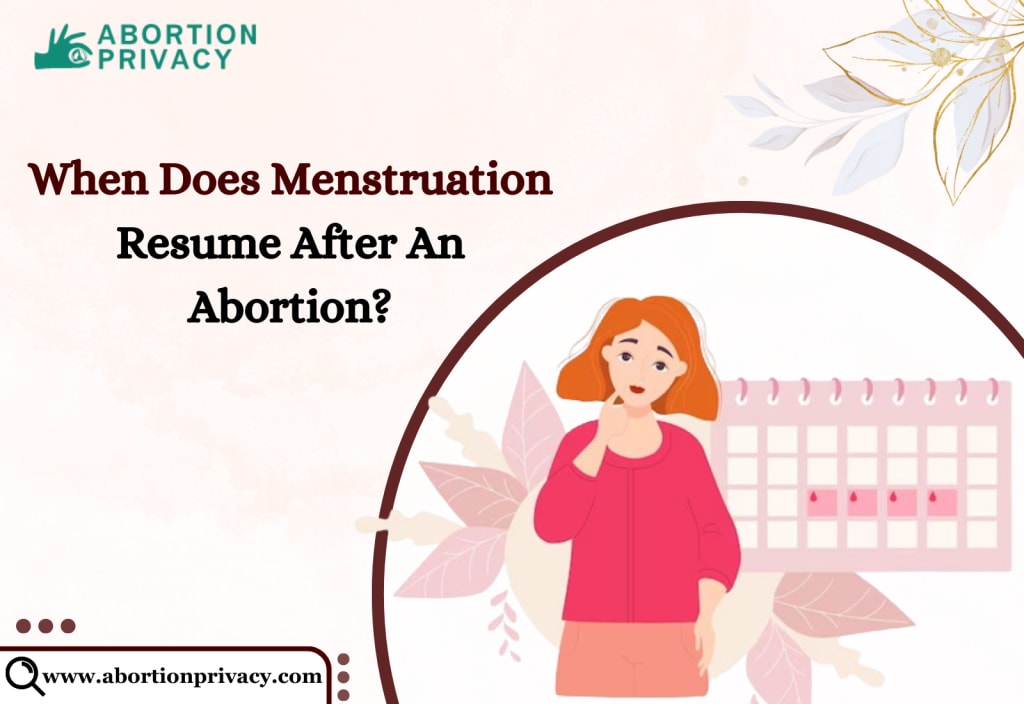When Does Menstruation Resume After An Abortion?
Abortions considered low-risk medical procedures that end pregnancies, usually result in a person's first period of menstruation returning within 4-8 weeks.

In What Ways Does Abortion Impact The Menstrual Cycle?
After undergoing an abortion, individuals typically experience their next menstrual period within 4-8 weeks. The abortion, by emptying the uterus, initiates the restart of the menstrual cycle. The specific onset of the next period depends on the type of birth control used, if any. A woman should seek advice from her healthcare provider if her period has not started eight weeks after undergoing an abortion.
What Does Post-Abortion Bleeding Entail?
After undergoing an abortion, many individuals encounter post-abortion bleeding, a term used by doctors to describe this occurrence. Using pads to monitor blood loss is recommended. Abortion methods primarily fall into two categories: medical and surgical. In this discussion, we explore these abortion types and the associated post-procedure bleeding.
Bleeding After A Medical Abortion
In a medical abortion, abortion pills are provided by the doctor to terminate the pregnancy, a method applicable within the first 11 weeks of gestation. The procedure involves two prescribed pills: Mifepristone and Misoprostol, mifepristone, halts further pregnancy development, and misoprostol, induces the expulsion of pregnancy tissue from the uterus. Misoprostol prompts uterine contractions, leading to bleeding similar to a heavy period. Bleeding intensity varies among individuals, and some may pass large blood clots. Individuals may suffer spotting or mild bleeding for up to two weeks after the ejection of pregnancy tissue.
Bleeding After A Surgical Abortion
In the second stage of pregnancy, surgical abortions are frequently carried out after ten weeks of gestation. The first, vacuum aspiration, employs suction to remove the pregnancy, while the second, dilation and evacuation, involves dilating the cervix with forceps and using suction to extract the pregnancy.
Up to 14-16 weeks after the previous menstrual cycle, vacuum aspiration is widely used, with dilatation and evacuation advised for longer periods.
Post-surgical abortion, individuals may experience postabortion bleeding akin to a regular period. This bleeding typically persists for about 1–2 weeks, and some individuals may encounter spotting until their subsequent period.
Does it lead to irregular menstrual cycles?
Certain birth control methods might impact the consistency of menstrual cycles post-abortion. Individuals with a history of irregular periods may continue to experience irregularities after an abortion. An abortion-related emotional strain may also have an impact on the menstrual cycle, possibly changing its regularity. If someone encounters irregular periods post-abortion, especially if this wasn't the case before, it is advisable to consult with their doctor.
What can be anticipated during the initial menstrual cycle?
Following a surgical abortion, the initial menstrual cycle might be briefer than usual. Because there is less tissue to discharge, the surgery thoroughly empties the uterus, which results in a lighter period. Conversely, after a medical abortion, the first period may be prolonged, influenced by the hormones used in the treatment, potentially impacting cycle length. This period could also be heavier as additional tissue may need expulsion post-procedure. To monitor blood loss, using pads during the initial period after an abortion is recommended.
What should you expect during your second period?
The second menstrual cycle post-abortion is expected to revert to the individual's typical menstrual pattern. However, for some, it might take two or three cycles for periods to fully regulate. If this normalization doesn't occur, consulting with a doctor is advisable.
When is it permissible to begin using birth control?
You can begin using birth control right after an abortion. If you prefer an intrauterine device (IUD), your healthcare provider can insert it during the same appointment as the abortion. IUDs are effective birth control methods, with hormone-free copper IUDs and hormonal-plastic IUDs available. Copper IUDs don't impact mood but may lead to heavier periods. Hormonal IUDs can lighten periods but, like other hormonal contraceptives, may affect mood. Condoms are a reliable hormone-free option that doesn't require surgery. Selecting an approach to contraception is a personal choice, and each person's preferred technique may differ.
When Should You Go See A Doctor?
If someone has very heavy bleeding after an abortion or pain that can't be managed with over-the-counter medicine, it's essential to talk to a doctor. Seeing blood clots up to the size of a lemon is normal during post-abortion bleeding. But if someone notices blood clots larger than this, they should reach out to a doctor. Feeling dizzy, sweaty, or nauseous during or after an abortion is common. However, if someone feels extremely faint or has a high temperature, it's important to consult with a doctor. If there are any worrisome symptoms, talking to a doctor for advice and reassurance is the right thing to do.
Conclusion
Abortions initiate the restart of the menstrual cycle, with most individuals experiencing their period 4–8 weeks post-abortion. After a medical abortion, the initial periods may be lengthier and heavier, while after a surgical abortion, the first period tends to be shorter and lighter. Seeking medical advice is recommended if periods do not start eight weeks after the abortion or do not return to normal within three months. Bleeding after abortion is not uncommon. But it's important to see a doctor if it's really heavy, lasts more than two weeks, or has blood clots the size of lemons. To get rid of an unwanted pregnancy and face a few symptoms, one can opt for abortion pills online.
About the Creator
Irina Weindorf
Hello, I'm Irina Weindrof. Since I started working with AbortionPrivacy eight years ago, I've helped women on their path to living healthy lifestyles, addressed issues with reproductive health.
Enjoyed the story? Support the Creator.
Subscribe for free to receive all their stories in your feed. You could also pledge your support or give them a one-off tip, letting them know you appreciate their work.






Comments
There are no comments for this story
Be the first to respond and start the conversation.